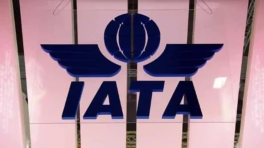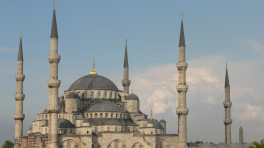The health of 7.8 billion people is stuck in a dangerous place between China and Trump
The World Health Organization is fighting the worst pandemic in a century — and facing an unprecedented political challenge

In mid-February, an international team of medical experts converged on Beijing to learn more about the novel coronavirus. Dispatched by the World Health Organization after delicate talks with the Chinese government about its composition and agenda, it included some of the brightest lights in epidemiology and virology, affiliated with institutions including the National Institutes of Health, the University of Hong Kong, and Germany's national infectious-disease center. They would be accompanied by a group of Chinese scientists, and would be responsible for producing a joint report on the nature of the virus and how it was spreading within the world's most populous country.
On the first day of the trip, the non-Chinese members gathered to discuss their so-called terms of reference — the subjects they intended to learn more about as they visited hospitals and research institutions. It was Feb. 16, a little over a week after Li Wenliang, the Wuhan doctor who was reprimanded by local officials when he tried to warn colleagues that a dangerous new pathogen was on the loose, had succumbed to the virus himself. Li's death was huge news in China, prompting an outpouring of rage on social media and wide international coverage. But whether warnings had been suppressed in Wuhan — then the virus epicenter — during the early days of the outbreak would not be part of the team's brief. "It was not going to be helpful," Dale Fisher, an infectious-disease specialist at the National University of Singapore who was part of the group, said in an interview. "Our mission really needed to be about collecting technical information and informing the rest of the world. The terms of reference reflected the fact that we wanted very much to look forward, not focus on the past."
While that decision undoubtedly made sense for the scientists, it was also an example of why, at a time when the WHO is trying to coordinate the response to the worst pandemic in a century, it faces an unprecedented political challenge — rooted in concerns about its relationship with China. The Trump administration ramped up its attack on the organization this week, threatening to permanently cut its funding and reconsider US membership if the WHO doesn't enact a sweeping overhaul. While those demands look like an attempt to distract from the US's own failures in containing the coronavirus, the White House isn't alone in raising concerns: Australia and Canada also called for inquiries into the origins of the pandemic and the WHO's response to it.
The WHO's international governing body this week approved plans for an independent review of the response to the pandemic, including the organization's role. Director-General Tedros Adhanom Ghebreyesus, a former Ethiopian health official and the first non-physician to hold the job, said he welcomed the scrutiny.

Even as Trump threatened the WHO, President Xi Jinping of China — which has drastically expanded its influence over multilateral agencies in tandem with its economic rise — declared his support for the agency. In a speech Monday, he pledged $2 billion over two years to help fight the virus and said China would make any vaccine universally available once it's developed.
With the WHO in the middle, the US-China rift deepened anew late Wednesday when Trump suggested that Xi was behind ``a misinformation and propaganda attack on the United States and Europe.''
While its name might imply the WHO provides care, its key function, particularly in outbreaks, is to deliver information — learning as much as it can about what's happening on the ground and guiding the rest of the world on how to react. But its critics question whether, in the early weeks of the coronavirus pandemic, that mission was compromised by excessive deference to what Beijing wanted the world to hear. If true, it would be a symptom of a larger, well-recognized issue: that the WHO has little room to maneuver without the approval of member states.
There's no question the group does an immense volume of invaluable work. Its curriculum vitae includes a long list of successes, from the virtual eradication of polio to the successful containment, in 2003, of severe acute respiratory syndrome. In the current crisis, the WHO is organizing efforts to supply developing countries with protective gear and working with partners including the European Commission to fast-track vaccine and drug development. Nor should scrutiny of its actions on Covid-19 excuse the shortcomings of countries like the US and the UK in preparing for the virus. But in a world that will, for the foreseeable future, be more alert than ever to the threat of infectious disease, some experts are calling for a review of the WHO's powers and protocols.
"Deference to the sovereignty of one nation can't be allowed to put every other nation at risk," said Thomas Bollyky, director of the global health program at the Council on Foreign Relations and a former negotiator on medical issues for the US government. "Either the WHO needs to be given additional authority and empowered to act more aggressively and proactively on outbreaks, or we'll have to find some other entity that is set up to do that." But options to improve the institution's approach to controlling epidemics should be exhausted before considering anything new, he said.
The WHO's origins date nearly to the founding of the United Nations and the broader postwar order. The preamble to its 1948 constitution set out a guiding ethos: "The enjoyment of the highest attainable standard of health is one of the fundamental rights of every human being." It continued: "The health of all peoples is fundamental to the attainment of peace and security."
That sweeping mission statement led the agency to take on a huge range of challenges, from promoting maternal health and birth control to immunization and aiding refugees. For most of its early history the organization's role was largely advisory, in keeping with its legal basis: officially, the WHO is the bureaucratic arm of the World Health Assembly, a global parliament of UN members devoted to health issues. The key exception was smallpox, in which the organization played a key role in coordinating the effort to eliminate a devastating illness that had been a scourge of human populations since at least the days of ancient Egypt.


Events in the 1990s, though, showed the dangers posed by newer, less-understood infections in a rapidly globalizing world. A 1995 outbreak of Ebola in Kikwit, a city in what's now the Democratic Republic of Congo, sickened hundreds of people, ultimately killing about 80% of them. With help from the WHO and other agencies the virus was contained, but the potential for more deadly epidemics was clear, and the agency began gradually taking on a more muscular role. In 2000, it set up the Global Outbreak Alert and Response Network, a consortium of health institutions that would track emerging diseases. And it soon had a chance to act more aggressively. When SARS emerged in 2002 in southern China, the first reaction of the government in Beijing was to attempt a cover-up, suppressing news of the disease and refusing to inform the WHO. It only learned of the flare-up months after it began, after an emailed tip-off describing a contagious disease that had left more than 100 people dead in Guangdong Province in the space of a week. By then, SARS was spreading in Hong Kong, moving from there to Toronto, which would eventually have the highest number of cases outside Asia.
The WHO's director-general at the time, the former Norwegian Prime Minister Gro Harlem Brundtland, issued what was by UN standards a scathing critique of China's behavior, saying it would "have been definitely helpful if the international expertise and WHO had been able to help at an earlier stage." She also issued the WHO's first-ever travel advisories, urging the postponement of trips to parts of China as well as Toronto.

SARS, which was contained largely to a few places and killed fewer than 1,000 people, ended up being a public-health success story, an example of how decisive action could prevent a novel disease from becoming an economy-shattering epidemic. But a 2005 attempt to give the WHO more robust powers — for example, to formally sanction countries that failed to report outbreaks — fell short of a true overhaul. Member states simply didn't want to hand it that kind of tool. And if the WHO was going to continue to serve as the world's public-health police force, it would have to do so on a shoestring. So-called assessed contributions — bills sent automatically to its members — cover less than 20% of its budget, with the rest raised on a voluntary basis from national governments and organizations like the Bill & Melinda Gates Foundation. The US Centers for Disease Control and Prevention spend considerably more annually; so does the Cleveland Clinic.
Another Ebola outbreak, the explosion of infections in West Africa that began in 2014, showed the WHO's limitations. The virus had been raging across Liberia, Sierra Leone, and Guinea for more than half a year when the WHO declared it a "public health emergency of international concern," or PHEIC, its highest alert level. Margaret Chan, then the director-general, acknowledged that she had only grasped the severity of the epidemic once it was well underway — thanks to a deputy, Bruce Aylward, sending an email that urged her to make it a priority. The WHO's response was so sluggish that World Bank President Jim Yong Kim suggested the world needed a new, dedicated disease-response corps. In the end, the most effective international response was arguably that of President Barack Obama, who mobilized the CDC and the US Agency for International Development, supported by thousands of elite troops, to help bring the virus gradually under control. More than 11,000 people died. Chan conceded that the WHO had fallen short. "We responded, but our response may not have matched the scale of the outbreak," she told Bloomberg News at the time.
At least in the early stages of the pandemic, there was nothing unprecedented about the novel coronavirus. A flu-like virus emerging in a provincial part of China and jumping to humans — possibly from bats, via another animal — is a scenario so textbook that it formed part of the plot of the film Contagion. It's not yet clear when the virus first emerged, but as it began to take hold in Wuhan in December, China's reaction was different from that during SARS, at least outwardly. Authorities in the city alerted the WHO on New Year's Eve to a cluster of patients who were suffering from pneumonia of an unknown cause, and the agency activated its emergency-response capabilities the next day. "There were not weeks of central cover-up in Beijing, although local government obviously took too long to report seriously" that the disease was spreading, Brundtland said in an email. And China shared the genetic sequence of the virus on Jan. 12, allowing scientists elsewhere to develop their own tests and begin vaccine research.
China's transparency was still far from complete. For an extended period in mid-January — coinciding with important Communist Party meetings in Wuhan — the city reported zero new cases, a level of containment that was improbable, to say the least. Government-aligned scientists and municipal officials said repeatedly that there was no evidence of human-to-human transmission, even as Chinese social media buzzed with rumors that health-care workers were being infected by the mysterious new illness.
On Jan. 14, Maria Van Kerkhove, one of the scientists leading the WHO response, said at a Geneva press conference that human-to-human transmission might be occurring on a limited scale, noting that such infections wouldn't be surprising given the experience of other respiratory pathogens. But the same day, the WHO's official Twitter account posted a message that was much less equivocal, and which has since come back to haunt the agency: "Preliminary investigations by the Chinese authorities have found no clear evidence of human-to-human transmission."

The few people from outside mainland China who were able to observe conditions in Wuhan came away skeptical about what they were being told. A pair of Taiwanese infectious-disease specialists made an official visit to Wuhan from Jan. 12 to Jan. 15, where they were briefed by local officials who said human transmission was, at worst, limited. But the fact that there were a number of cases "not related to the wet market" — the Huanan market where the first reported coronavirus cluster was identified — "showed there was more than one source, and community infection could have already happened," said Chuang Yin-Ching, one of the pair. "These signs alerted us that we should be cautious about the situation in China. So when we came back from the trip, we suggested that we should treat the virus as if there was human infection."
No one from the WHO raised the possibility in public that China might not be providing the full picture. The organization appeared to be "uncritically passing along the information that China was putting forward when a little more distance would have been a good idea," said J. Stephen Morrison, the director of the Global Health Policy Center at the Center for Strategic & International Studies.
WHO officials say that behind closed doors they were pushing China to tell them more, and that many countries have struggled to present accurate data on infections and deaths — often due simply to hospitals being overwhelmed. "Our sole objective is to make sure the right decisions are taken and not that somebody is blamed or not blamed. Sometimes these discussions are very tough, but they are always respectful," Chief of Staff Bernhard Schwartlander said in an interview. One of the successes of the agency's approach to China, he said, was that "there were never closed doors. That's important. For us and diplomacy, the worst is if a door closes."
When China did pivot to treating the coronavirus as a full-blown crisis, it gave the WHO little warning. On the evening of Jan. 22, after a panel of about 20 top advisers had deadlocked about whether to elevate the coronavirus to the highest alert level, a group of WHO officials was in Tedros's office discussing what to do. Suddenly, according to a person familiar with the situation, a staff member burst in with dramatic news: China had sealed off Wuhan from the rest of the country, the first step in what eventually became a total lockdown of Hubei Province. After a follow-up meeting the next day, Tedros, the director-general, said it wasn't yet a PHEIC, but had the potential to become one. The committee agreed to reconvene soon.

Before then, Tedros had an important meeting to attend. On Jan. 28, he met Xi in Beijing, accompanied on the trip by Schwartlander and Mike Ryan, the head of the emergencies program. While they were there, the WHO received some of its first clear information indicating that the virus was being passed beyond close contacts. That news, however, came not from China but from Germany, which was beginning to observe a cluster of infections in Munich. On the plane back to Switzerland, the WHO group decided to assemble the agency's top brass to discuss whether it was time to declare a PHEIC. Speaking to reporters after the agency made that determination on Jan. 30, Tedros heaped praise on China's response, saying it was "beyond words," and that he left Beijing "in absolutely no doubt about China's commitment to transparency and to protecting the world's people."
Didier Houssin, chair of the emergency committee, added that the WHO would closely scrutinize travel restrictions imposed by other countries — to which Xi's government was bitterly opposed — with a view to asking them to "reconsider this decision." The list of places doing so would soon include Taiwan, Hong Kong, Australia, and New Zealand, all of which have performed well in containing the pandemic. The US, which imposed a relatively porous travel restriction around the same time, has had a very different experience.
China's commitment to transparency, however, didn't extend to letting just anyone see its virus response up close. Getting a substantial WHO delegation into the country took more than a week of complex discussions over who would be on the team and what it would do. Schwartlander said that typically before sending a team "you need to convince a country the WHO is coming to help, not to police you. All countries are nervous in these situations."

Led by Aylward, the doctor who delivered the WHO's Ebola warning in 2014, and Liang Wannian of China's National Health Commission, the group spent a little over a week on the ground, visiting research facilities and hospitals and speaking to doctors, although only a small subset were permitted to travel to Wuhan. Like Tedros, they came away full of praise for how the virus was being handled. In their report, the group wrote that "China has rolled out perhaps the most ambitious, agile, and aggressive disease containment effort in history," protecting the world in the process. In addition to lauding the efforts of health professionals and ordinary citizens, they singled out China's paramount leader. "General Secretary Xi Jinping personally directed the prevention and control work," the report read.
Other countries no longer have to rely on the WHO to tell them about the coronavirus. They now have plenty of cases to study at home — nowhere more so than the US, where the Trump administration's chaotic response created the conditions for the world's deadliest outbreak. Some officials are nonetheless asking hard questions about the agency's performance. Australia's foreign minister, Marise Payne, said in April that her government shares "some of the concerns the United States have identified in relation to" the WHO, and that it should be one of the subjects, rather than the organizer, of an international inquiry into the origins of the pandemic. Health Minister Greg Hunt complained that "what we saw from some officials in Geneva, we think was a response which didn't help the world." Canada's foreign ministry, for its part, said there was "a critical need for a post-crisis after-action review." The independent evaluation of the response to the pandemic, including the WHO's role, will be launched at "the earliest appropriate moment," Tedros said. A resolution authorizing the review was approved this week at a meeting of the World Health Assembly.
The review is unlikely to resolve tensions with the US, where the White House has made accusing the WHO of mishandling coronavirus a political priority in the run-up to November's presidential election. It is undoubtedly an outlier — no other country has threatened to cut its WHO funding, nor attacked it in such strident terms — but, as the agency's largest donor by far and the global hub for health research, it can hardly be ignored. "We want and need strong scientific and strategic partnerships with the US," said the WHO's Ryan. "We cherish that relationship." While Democrats, including presumptive presidential nominee Joe Biden, have largely defended the WHO, that position could be more difficult to sustain if an impression hardens, in Washington and the broader electorate, that it's too close to Beijing. Tedros did himself no favors in US political circles by suggesting in an April press conference that the government of Taiwan — a bedrock American ally with a deep well of support in both parties, and which is excluded from participating in WHO activities due to Chinese pressure — had refused to disassociate itself from racist attacks against him.

The WHO's recent troubles haven't detracted from the passionate support it enjoys in public health circles. Despite its limited budget it delivers a vast array of crucial programs, many of them in conflict zones and among the world's poorest. Developing countries "need the WHO," said Amadou Alpha Sall, the director of the Institut Pasteur in Dakar, Senegal. "There's always the possibility of doing better, but in the middle of the storm they're doing well."
Nor is it clear what a rebooted or replaced WHO would look like. Australia's prime minister, Scott Morrison, has proposed giving the WHO the ability to send teams of experts to investigate disease outbreaks without necessarily getting permission first, akin to how weapons inspectors operate. That idea, or related suggestions that the WHO should have the ability to levy sanctions on member states — a power enjoyed by the World Trade Organization — would undoubtedly prove the most difficult to implement. Even the governments most supportive of transforming the WHO might balk at giving it the power to override them.
Schwartlander urged member states to proceed with such reforms cautiously. "It's easy in a moment of frustration to say we need to throw all of this out and do something completely different," he said. "But it may come at huge cost because it also may cut down on the opportunity for consensus."
Other proposed reforms are probably more attainable. Health experts have long complained about the agency's practice of appointing regional heads by secret ballots among member states, arguing this can make them too beholden to the governments that elected them. It might also be possible to revamp the WHO budget to make it less dependent on voluntary contributions, providing more certainty about future resources.
Still, countries looking for a revamped WHO — by itself — to save them from the impact of the next pandemic may be looking in the wrong place. In the still-evolving coronavirus crisis, the US, along with dozens of other governments, could in retrospect have acted faster or more decisively.
Seeking scapegoats, whether in Geneva or China, is missing the point, said Marie-Paule Kieny, a former WHO official and now a research director at Inserm, a French health-science institute. "How long did it take the US government to see, to understand, and to report that there was a problem?" she asked. "The Chinese government messed up in the early weeks," but since then "they have shared enormously, and unfortunately the other countries didn't take this seriously, because they didn't think it would come to them."
Disclaimer: This article first appeared on Bloomberg.com, and is published by special syndication arrangement.


 Keep updated, follow The Business Standard's Google news channel
Keep updated, follow The Business Standard's Google news channel














